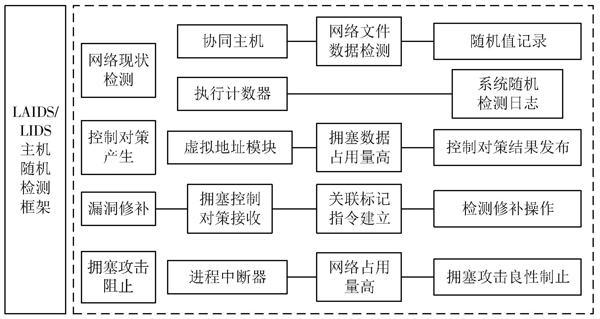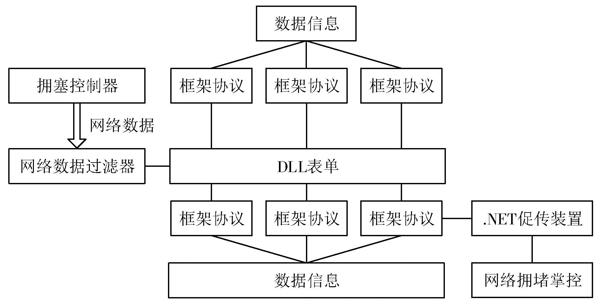基于随机检测算法的网络拥塞控制系统设计
2019-09-02李新炜
李新炜



摘 要: 为解决由传输数据堆积而引发的网络拥塞问题,达到缩减网络滞后延迟的目的,设计一种基于随机检测算法的新型网络拥塞控制系统。利用LAIDS/LIDS主机随机检测架构,对拥塞控制器、网络数据过滤器进行调节,完成新型系统的硬件运行环境搭建。通过传输数据拥塞定义的方式对网络中可能出现的拥塞情况进行分类处理,再根据具体判断结果选择合适的网络拥塞控制方式,实现新型系统的软件运行环境搭建。结合软、硬件结构,完成基于随机检测算法的网络拥塞控制系统设计。对比实验结果表明,与现有控制系统相比,应用新型控制系统后单位时间内传输数据堆积量的最大值不超过5.5×1013 TB,网络滞后延迟平均值始终低于60 ms,网络拥塞现象得到有效缓解。
关键词: 随机检测; 拥塞控制; LAIDS/LIDS架构; 运行环境搭建; 拥塞数据分类; 系统设计
中图分类号: TN876?34; TP273 文献标识码: A 文章编号: 1004?373X(2019)09?0055?05
Design of network congestion control system based on random detection algorithm
LI Xinwei
(Dongchang College of Liaocheng University, Liaocheng 252000, China)
Abstract: In order to solve the network congestion problem caused by transmission data accumulation and reduce the network delay, a new network congestion control system based on random detection algorithm is designed. The LAIDS/LIDS host random detection architecture is utilized to adjust the congestion controller and network data filter to complete the hardware running environment establishment of the new system. The congestion situations possibly appeared in the network are classified by defining the transmission data congestion modes, and then the appropriate network congestion control mode is selected according to the specific judgment results to realize the software running environment establishment of the new system. The design of network congestion control system based on random detection algorithm is completed by combining the hardware and software structures. The contrast experimental results show that, in comparison with the available control systems, the new system′s maximum accumulation amount of transmission data in unit time is less than 5.5×1013 TB, and the average delay of network is always lower than 60 ms, and the network congestion phenomenon is effectively relieved.
Keywords: random detection; congestion control; LAIDS/LIDS architecture; running environment establishment; congestion data classification; system design
网络拥塞是一种严重的网络传输性能下降情况,当分组交换网络中的传输任务过于繁杂时,存储转发节点的传输能力会受到资源数据的严格限制,进而导致链路带宽急剧下降,网络开始出现存储空间满额、数据处理能力受损等问题。从数据调节角度来看,当网络长时间处于过载负荷状态时,数据传输所必需的固有处理能力和信道容量始终不能得到满足,而用户在不了解网络情况的状况下,会对核心处理网络发出大量的连接请求,这也是导致网络拥塞现象恶性循环的主要原因[1?2]。当网络出现拥塞情况时,传输数据会大量堆积在物理信道中,进而导致网络出现明显的滞后延迟[3]。现有技术手段为解决此问题,利用主动队列管理方法在发生拥塞情况前,截取大量的数据包信息,并通过调整执行设备神经元权值的方式,迫使数据丢包概率持续下降,达到抑制网络拥塞的目的。但随着科学技术手段的进步,这种传统方式始终不能达到理想的处理效果,因此引入随机检测算法,在对传输数据进行定义、分类处理的基础上,建立一种新型的网络拥塞控制系统。从实用性角度来看,这种新型系统有效解决了现有系统的遗留问题,具备较强的实际推广价值。
